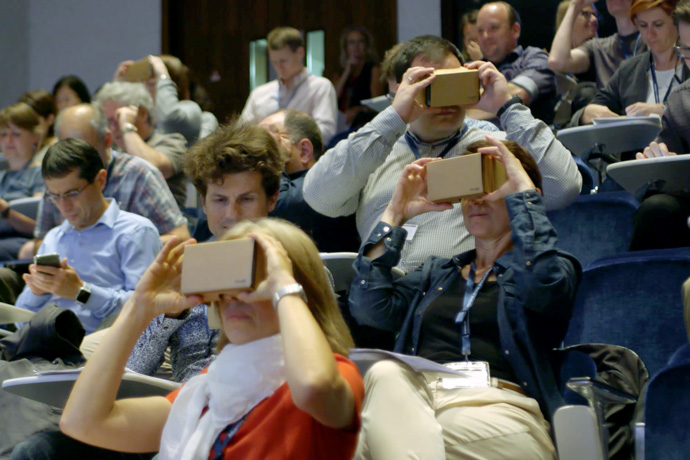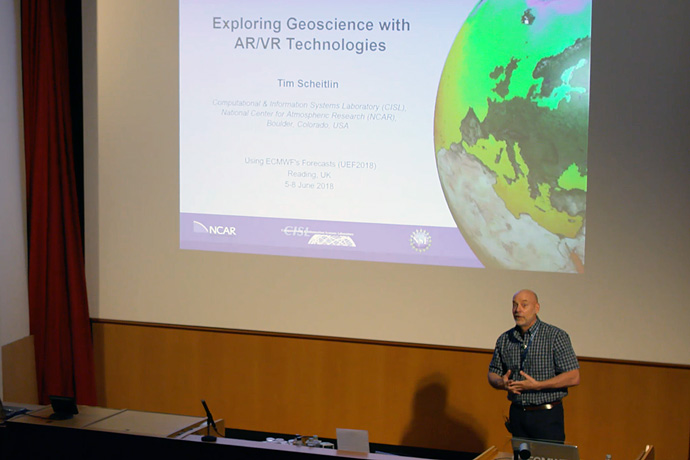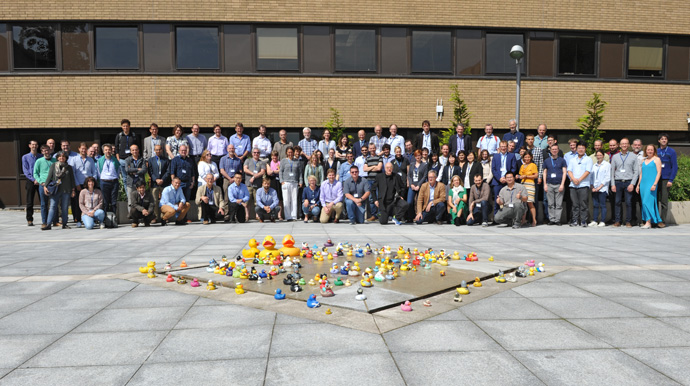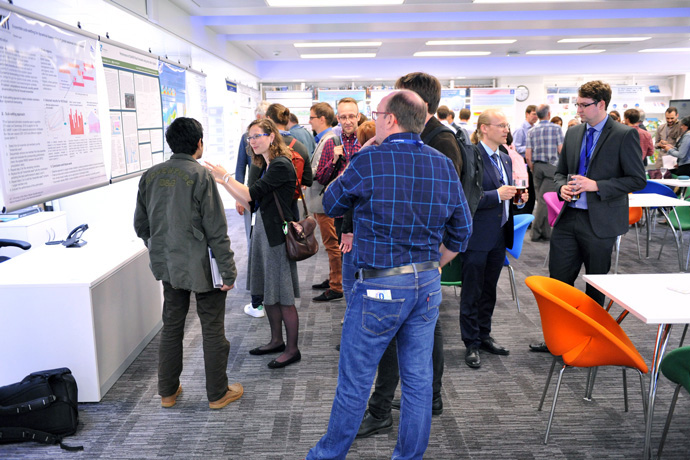

Participants in this year’s Using ECMWF’s Forecasts meeting (UEF) from 5 to 8 June 2018 tested the use of virtual reality to visualise weather data. They also heard about ECMWF product updates and showed software or services developed in ECMWF’s Member and Co-operating States.
The theme of UEF 2018 was that ‘the only limit is your imagination’ when turning weather data into useful information.
Tim Scheitlin from NCAR (the US National Center for Atmospheric Research) probed that limit by leading a workshop on visualising geoscience data using virtual and augmented reality.
Virtual reality (VR) enables users to be fully immersed in a virtual environment, while augmented reality (AR) enhances the real world with virtual objects.
Tim suggested that VR could be used by decision-makers to experience severe weather and understand how their decisions may affect people.
UEF participants were able to gain first-hand experience with VR and AR using ECMWF snowfall and snow accumulation products.
“There was great interest in this workshop as it demonstrated innovative and thought-provoking ways of visualising weather data,” meeting organiser Anna Ghelli said.

Tim Scheitlin led the workshop on the use of VR and AR to visualise geoscience data.
Product and application updates
Other UEF highlights included a presentation by ECMWF Director of Forecasts Florian Pappenberger on recent developments in physical parametrization, data assimilation and ocean–atmosphere coupling.
He also updated the 120 participants on the work done by the Copernicus Climate Change Service (C3S) and Copernicus Atmosphere Monitoring Service (CAMS) implemented by ECMWF, as well as on the Centre’s contribution to the Copernicus Emergency Management Service (CEMS) in the fields of flood and fire danger forecasting.
A talk on forecast product development presented among other things ECMWF’s new lightning density products and a new product to show the vertical structure of the atmosphere at a point.

A record number of more than 120 participants attended the UEF 2018 meeting.
In turn, several external speakers illustrated the use of ECMWF data to support forecasters at national meteorological services in the Centre’s Member and Co-operating States. Examples include the use of ensemble forecasts to initialise limited-area models and storm surge models.
Applications of ECMWF data presented by weather companies included supporting African farmers by providing them with local weather forecasts, and coupling an eddy-resolving model with ECMWF data to resolve small-scale phenomena like turbulence for applications such as wind turbine planning and management.
Posters galore
UEF meetings provide plenty of opportunities to engage with other participants who have similar areas of interest and to seek future collaborations.
Posters sessions are a good example: this year a record number of posters were shown in two sessions.

UEF poster sessions are a popular way of sharing information among ECMWF’s users.
Topics covered included the use of ECMWF’s ensemble forecasts for applications in the developing world (Bangladesh, Uganda) to increase resilience and mitigate natural disasters.
A number of posters presented performance assessments of ECMWF forecasts in the medium and extended range.
MeteoSwiss presented an application in support of the European HEAT-SHIELD project, which aims to support European workers by providing heat-stress indicators for an early-warning system.
“UEF 2018 was very stimulating: it demonstrated the great potential for new weather data applications and enabled the sharing of experiences from across the range of ECMWF users,” Anna said.
“The exchange with users is also beneficial for ECMWF as we receive useful feedback on ECMWF data and products, which will be taken into account in our future work.”
